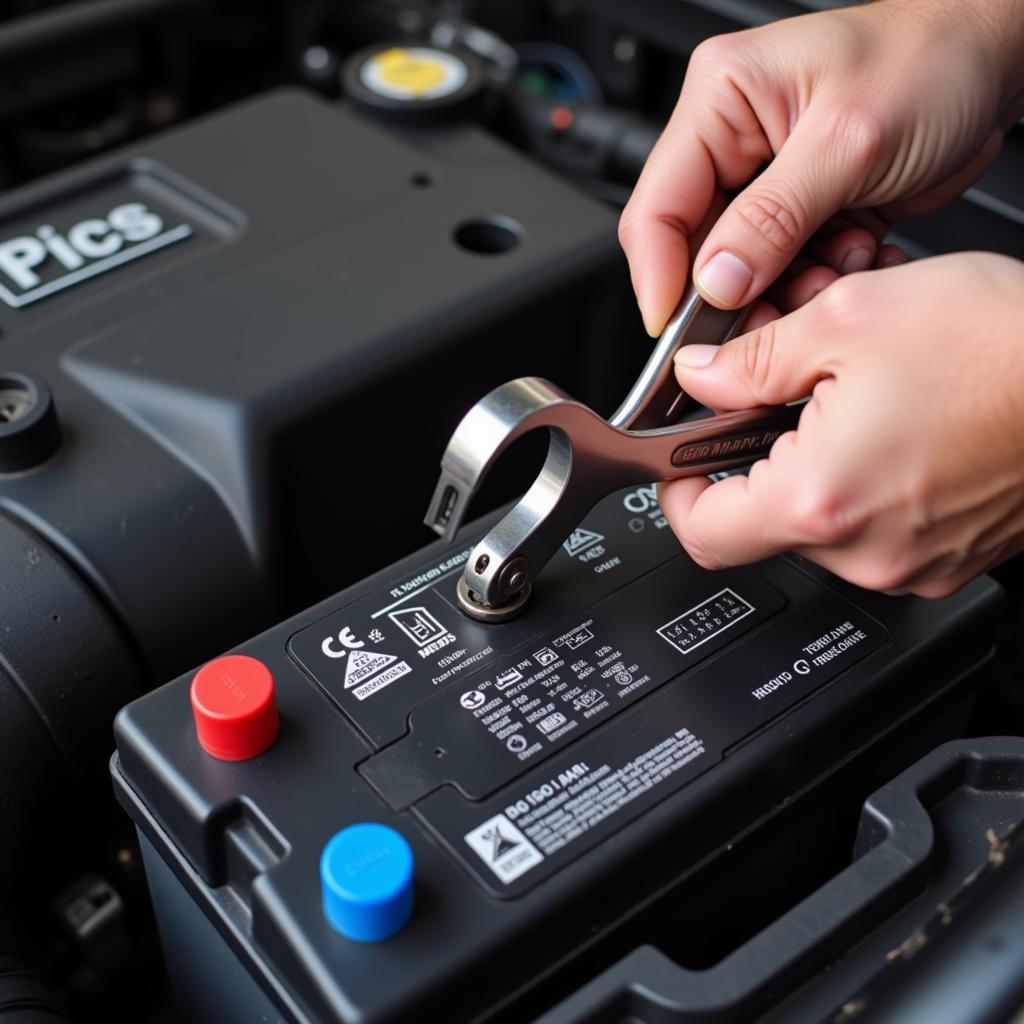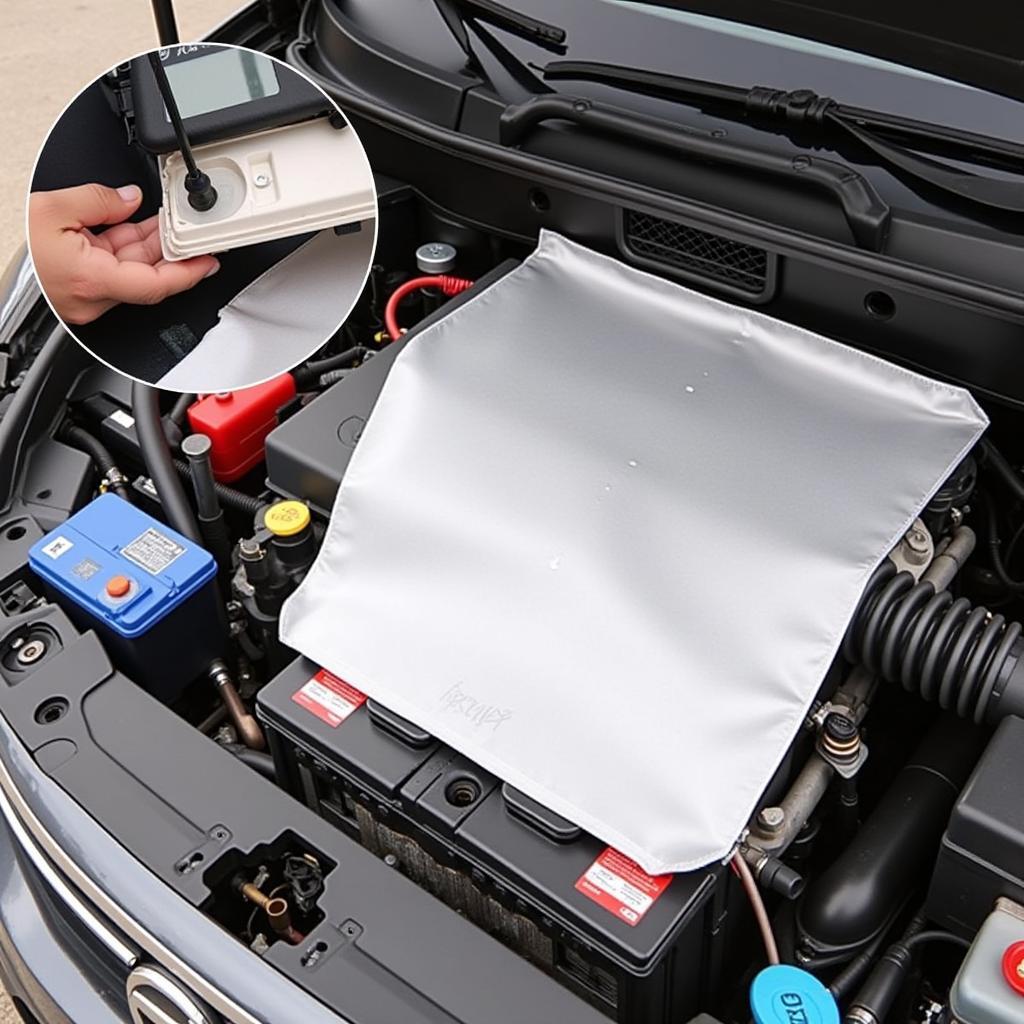A dead battery on a frigid morning is a common winter woe. If your car battery won’t start in cold weather, you’re not alone. This article will guide you through the causes, troubleshooting steps, and solutions to get you back on the road quickly.
Similar to an old car radio with bluetooth, sometimes older components can fail in the cold. Several factors contribute to a car battery’s struggle in cold temperatures. First, the chemical reactions within the battery slow down, reducing its ability to deliver the necessary power to crank the engine. Second, engine oil thickens in cold weather, requiring more effort from the starter motor, and thus, more power from the battery. Finally, the cold can exacerbate existing battery issues that may not be apparent in warmer weather.
Why a Car Battery Struggles in the Cold
Cold temperatures drastically affect battery performance. The chemical reactions within a lead-acid battery that produce electricity slow down as the temperature drops. This leads to a decrease in the battery’s cranking amps, the amount of current the battery can deliver for a short period, which is essential for starting the engine. In extreme cold, a seemingly healthy battery can lose up to 50% of its cranking power. This loss, coupled with the increased power demand from the starter motor due to thickened engine oil, often results in a no-start situation.
How to Troubleshoot a Cold Car Battery
Before assuming your battery is dead, it’s crucial to rule out other potential culprits. First, check all your lights, interior and exterior. If they appear dim or flicker, it could indicate a weak battery. Next, listen carefully when you turn the key. A clicking sound usually indicates a low battery, while a slow crank suggests the battery has some power but not enough to start the engine. If you hear nothing at all, it could be a problem with the starter, ignition switch, or electrical connections.
 Mechanic Checking Car Battery Terminals
Mechanic Checking Car Battery Terminals
Solutions for a Cold Car Battery
There are several ways to address a cold car battery issue. One option is to jump-start the car using jumper cables and another vehicle. Remember to connect the cables correctly, positive to positive and negative to ground. Once the car starts, let it run for at least 30 minutes to recharge the battery. If your battery frequently struggles in cold weather, consider investing in a battery warmer or trickle charger. A battery warmer keeps the battery at a higher temperature, while a trickle charger maintains a constant charge, preventing it from discharging completely. It’s also vital to ensure your battery is in good condition. Like choosing the best android bluetooth car radio, picking a high quality battery is important. Have it tested regularly, especially before winter, to check its cranking amps and overall health.
Can you make changes to improve your situation? Absolutely! Similar to asking can i make my car radio bluetooth capable, you can upgrade your battery. If your battery is old or has been repeatedly struggling, it may be time for a replacement. Modern batteries are designed to perform better in extreme temperatures.
Preventing Cold Car Battery Issues
Prevention is always better than cure. Keeping your car in a garage can significantly reduce the stress on the battery in cold weather. If you don’t have a garage, consider using a battery blanket to insulate the battery and retain heat. Regularly cleaning the battery terminals and ensuring they are tightly connected can also prevent issues. Finally, avoid short trips, as they don’t allow the battery sufficient time to recharge after starting the engine.
“Regular battery maintenance is like an oil change for your electrical system,” says automotive expert John Smith, Lead Technician at Smith Automotive Solutions. “It’s a small investment that can save you from a major headache down the road.”
 Installing a Car Battery Blanket
Installing a Car Battery Blanket
Conclusion
A car battery that won’t start in cold weather is a frustrating but often preventable problem. By understanding the causes, taking preventative measures, and knowing how to troubleshoot and solve the issue, you can keep your car running smoothly throughout the winter. Remember to test your battery regularly, especially as winter approaches, and invest in preventative measures like battery warmers or trickle chargers if necessary. Don’t let a dead battery leave you stranded in the cold!
For many people, finding the right resources is key. This is similar to researching how much costs to install car gps radio. Knowing the cost upfront can help you budget accordingly.
FAQ
-
Why does my car battery die in cold weather? Cold weather slows down the chemical reactions within the battery, reducing its power output.
-
How can I tell if my battery is dead or dying? Dim lights, a clicking sound when turning the key, or a slow crank are common indicators.
-
How can I prevent my car battery from dying in cold weather? Park in a garage, use a battery blanket, keep the terminals clean, avoid short trips, and maintain a full charge.
-
How long does a car battery last in cold weather? A healthy battery can last several years, but extreme cold can significantly shorten its lifespan.
-
Can I jump-start a car with a dead battery in cold weather? Yes, but ensure proper cable connections and let the car run for at least 30 minutes after starting.
-
Should I replace my car battery before winter? If your battery is old or shows signs of weakness, it’s a good idea to replace it before winter.
-
What are the best car batteries for cold weather? Batteries with a high CCA (Cold Cranking Amps) rating are designed for optimal performance in cold temperatures.
“A reliable battery is your best friend during the winter months,” advises Jane Doe, Senior Automotive Technician at Doe’s Auto Repair. “Don’t neglect it, and it will serve you well.” Consider also exploring options like car audio radio usb bluetooth to ensure you have modern conveniences in your car.
